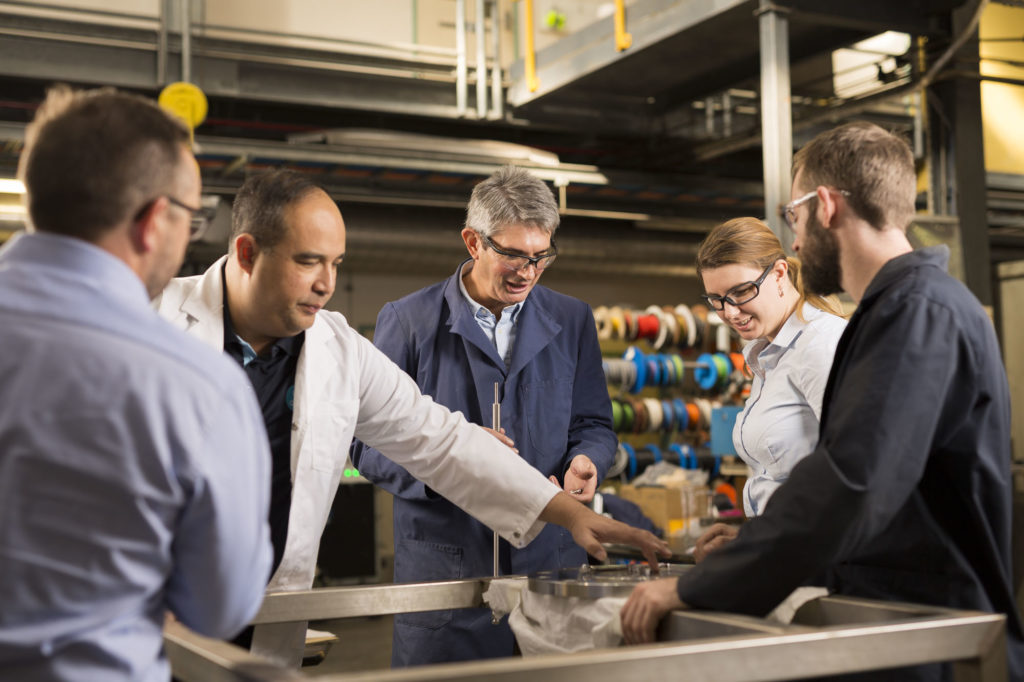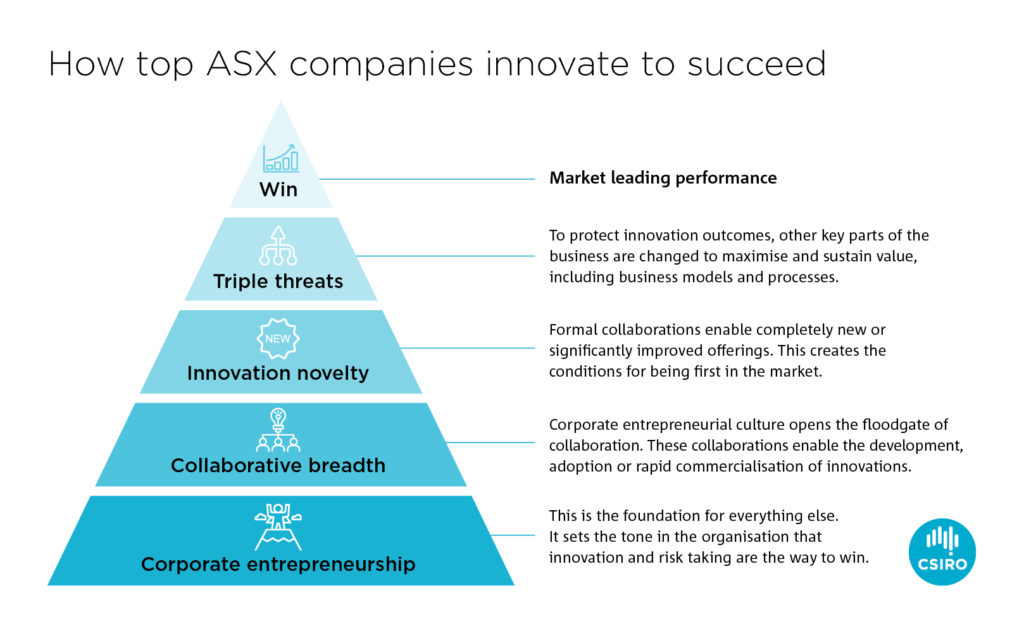
We're helping Textor Technologies adapt their fabric manufacturing technology to make face masks.
We’re helping Textor Technologies adapt their fabric manufacturing technology to make face masks.
As the COVID-19 pandemic continues to frame discussions in boardrooms across the country, our Director of CSIRO Futures, James Deverell, shares his thoughts on the key takeaways for Australian businesses.
In our landmark Australian National Outlook 2019 (ANO), we analysed the long-term prospects for Australia in detail. A common theme is the role science and technology will play in helping Australia overcome its largest challenges and capitalise on new opportunities.
Modelling in the ANO showed that by 2060, Australia’s living standards could be up to 36 per cent higher in positive scenarios than the base case, with more than 70 per cent of the difference attributable to technology investment. The report also showed how technology can help Australia smoothly transition to net-zero emissions by 2050, boost output in our land sector to meet growing food demand, make our growing cities more liveable and vibrant, and rebuild trust in our institutions.
Zooming in, over the past six months, we’ve seen first-hand how science, technology and innovation can help address urgent challenges. In response to COVID-19, Australia has made leaps forward in the uptake of innovative digital services. We’ve also adopted agile manufacturing to scale-up vaccines and the production of critical products like face masks.
Now Australia has an opportunity to build on that momentum by accelerating our investment in science and technology. This can help us boost our economic recovery from COVID-19 and build long-term resilience against future shocks.
But how do we achieve this when Australia lags many developed countries in technology investment and research collaboration? Our report on the value of science and technology provides a blueprint. It shows how Australian industry, government and research organisations can capture greater value from science and technology throughout the innovation cycle.
Here are three key takeaways for businesses.
Invest in technology and R&D to create competitive advantage
Australian businesses need to invest more in technology and Research and Development (R&D). Technology plays an important role in creating competitive advantage by boosting productivity and enabling new products and services. Furthermore, evidence suggests that large firms that invest more in R&D perform better than firms that prioritise dividends. But things are moving in the wrong direction in Australia, where business investment in R&D has declined by almost 30 per cent in the last decade.
In a recent report on a technology-led economic recovery from COVID-19, our team outlined 16 near-term, technology-enabled opportunities across six sectors. These include the short-term investments that could position Australia for a ‘green recovery’ in energy and build sovereign capability in advanced manufacturing. The report also outlines several longer-term opportunities where technology investment could help Australia boost competitiveness and build economic resilience.

Our COVID-19 Recovery and resilience report identified opportunities for the energy sector to help restore Australia’s economic growth. For example, we’re working on technologies that could lower the cost of hydrogen production and open up new energy export opportunities. Pictured: Energy researchers in the hydrogen lab. Image: ©John Nguyen Photography 2016
Collaborate for greater impact
Australian businesses, government and research organisations also need to collaborate more. Particularly on challenges and opportunities that are too large for one organisation to tackle alone. But Australia has a long way to go; we rank dead last in the OECD in collaboration between industry and research.
One example is our SME Connect program, which helps small to medium-sized businesses navigate Australia’s research sector. SME Connect works with businesses to understand their project goals, facilitate connections into the research sector, and manage the partnership from start to completion. The program also provides matched-funding grants for research projects and researcher placements that cater to SME businesses of all sizes.
Create an entrepreneurial culture
As the response to COVID-19 has shown, Australian businesses can capture more value through innovation and by maintaining a healthy attitude towards risk. In our recent report, Thriving through innovation: Lessons from the top, we found a correlation between top-performing ASX companies and a number of innovation factors.
Top performing companies are more likely to be first in the market with novel innovations that are new to the world or Australia. These top performers are also more likely to integrate product innovations. They do this with process and business model innovations for ‘triple threats’ that outperform new products alone. And they’re more likely to foster corporate entrepreneurship by rewarding risk-taking and innovative thinking.

Our thriving through innovation. Lessons from the top report show how top-performing companies use innovation to achieve a competitive edge. By embracing these principles, we hope more businesses harness science and technology innovation to drive their financial performance.
How we can help
As the strategic advisory arm of Australia’s national science agency, CSIRO Futures is uniquely positioned to help Australian businesses and government understand how science and technology can help unlock new opportunities and solve our biggest challenges. Drawing on the depth of expertise across CSIRO, our team has helped Australian companies and multinationals evaluate emerging technologies and plan their strategies to capture value from them.
We also work at a national scale, having published nearly a dozen industry and technology roadmaps over the last four years. These roadmaps span nearly every major industry in Australia and are deep dives into sector-specific opportunities. They’re aimed at building consensus amongst senior decision-makers in industry, government and research. They combine our deep domain knowledge with our economic analysis and understanding of the Australian context:
- In 2018, our National Hydrogen Roadmap created the foundation for Australia’s emerging industry through its detailed techno-economic analysis to understand key cost drivers and prioritise R&D investments to scale hydrogen production.
- In 2019, we released a report outlining technology-led growth opportunities in the food and agribusiness sector that could contribute $25 billion annually to Australia’s economy.
- Earlier this year, we released a roadmap on Australia’s emerging quantum technology industry, an opportunity that we found could generate $4 billion annually and create 16,000 jobs by 2040.
What’s next for CSIRO Futures
Looking forward, we’ll be releasing new roadmaps on Australian critical minerals in clean energy value chains, on synthetic biology to create new medicines and food products, and on CO2 utilisation to turn a waste product into a valuable commodity. We’re also beginning new investigations into the fight against infectious diseases and the growing market for future proteins. And we’re continuing to work with industry on ‘hydrogen hubs’ to aggregate hydrogen use, de-risk investment and lower the cost of hydrogen.
Please get in touch if you’re interested in being involved in any of these activities or if you’d like to find out more about how we can help your company identify new technology-backed opportunities.

